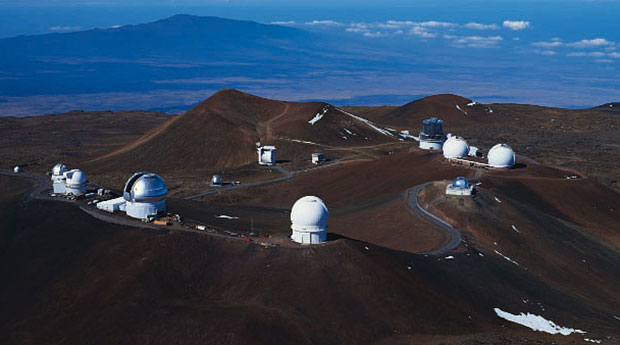This editorial by UH President David Lassner and UH Hilo Chancellor Donald Straney first ran in the Honolulu Star-Advertiser on Februay 28, 2016.

The University of Hawaiʻi’s stewardship of Mauna Kea extends beyond the construction and operation of observatories. We are also responsible for overseeing the process of taking observatories off the mountain at the end of their useful life.
Decommissioning a telescope is complex and the university has developed a process to ensure the observatories are removed in a safe and appropriate way.
The process is detailed in the 2010 “Decommissioning Plan for Mauna Kea Observatories,” (PDF which sets a timetable for removing four observatories by 2033.
UH is ahead of schedule and on track to exceed the committed number of telescopes that will be decommissioned by that deadline.
The decommissioning plan was developed after numerous public discussions with residents and stakeholders on Hawaiʻi island. The plan was then approved by both the UH Board of Regents and the state Board of Land and Natural Resources at publicly noticed open meetings that included multiple opportunities for public input.
Specific plans already have been announced for the decommissioning of three telescopes.
Decommissioning of the Caltech Submillimeter Observatory and the UH Hilo Hoku Kea telescopes is now underway, and decommissioning of the UKIRT telescope was announced in October 2015, to be completed by the time the Thirty Meter Telescope would be in operation. The Caltech Submillimeter Observatory and UKIRT were among the four telescopes identified in the decommissioning plan; the Hoku Kea telescope was not.
The commitment to the fourth telescope to be decommissioned by the end of the current master lease in 2033 also will be honored, along with a fifth telescope.
UH will meet the decommissioning goal set in Gov. David Ige’s 10-point plan.
The Hawaiʻi state auditor has repeatedly reviewed UH’s management of Mauna Kea and has never raised concerns about decommissioning. The 1998 audit did mention old test equipment that needed to be removed, and the 2005 audit confirmed that was done. In fact, the most recent audit in 2014 notes the decommissioning plan as among the management improvements UH has made.
The telescopes on Mauna Kea continue to produce significant scientific discoveries each year, and any telescope that might become obsolete would be removed as quickly as possible.
Two of the observatories we are removing from the mountain are at the end of their productive life: the Caltech Submillimeter Observatory and the Hoku Kea. The third one to be removed, UKIRT, continues to be one of the most highly productive telescopes in the world.
The actual decommissioning process described in the decommissioning plan is complex and must comply with environmental, historic preservation, cultural, health and other substantive and permitting requirements.
The Hawaiʻi island-based Office of Mauna Kea Management coordinates the decommissioning process, serves as a liaison with the Department of Land and Natural Resources, and oversees the required reporting and documentation.
The planning process is also coordinated with the cultural guidance of Kahu Ku Mauna, an advisory council from the Native Hawaiian community, as well as with the community-based Mauna Kea Management Board.
As outlined in the plan, decommissioned sites will never be reused for astronomy. The goal of decommissioning is full restoration of the site to the extent possible, taking into account the impacts of the restoration work itself.
Cultural and environmental perspectives and considerations are critical factors throughout the decommissioning process.
UH is already ahead of the schedule outlined in the decommissioning plan and is on track to exceed all commitments to contain the physical imprint of astronomy on Mauna Kea.
UH is fully committed to meet all the obligations outlined in the Comprehensive Management Plan in collaboration with our community-based and cultural advisers.

